#radioactive exclusion zone
Explore tagged Tumblr posts
Text

A chunk of gold in the Radioactive Exclusion Zone
14 notes
·
View notes
Text
Mine is the dense biozone, i love the unique plant-life (especially the big leaves that lift you up) + the big brain rocks, also the colour scheme is the most pleasing to me and it's cool when you dig and the dirt has red and blue on different facets it makes it look shimmery.
ALSO also the winding pits I like traveling up and down them making paths on the sides (also the thrill of one wrong move, and i plummet to my doom (THOSE WALLS ARE SLIPPERY)).
#deep rock galactic#drg#planetary regions#hoxxes#poll#drg poll#eummmm what else to tag.... the regions themselves yes#azure weald#radioactive exclusion zone#dense biozone#salt pits#sandblasted corridors#magma core#glacial strata#fungus bogs#crystalline caverns#hollow bough#we fight we mine for rock and stone#repost bc i forgot to change the poll end date lol
52 notes
·
View notes
Text

Yuriy while sandblasting the radioactive scrap metal. (Photographer, Pierpaolo Mittica.)
Inside the zone tons of metals lie abandoned, but over the years all this rusty gold has not gone unnoticed, and more or less illegally was recycled and today continues to be. Tons of metal leave the area each month. Since 2007, the Ukrainian government has legalized the recycling of radioactive metals with the blasting method. The workshop is close to the never finished number 5 and 6 reactors of the Chernobyl nuclear power plant, a huge warehouse where twelve men clean and recycle radioactive metals. Their work is terribly dangerous, almost a death sentence in slow motion, as it forces the workers to continuously inhale radioactive particles like caesium, strontium and plutonium.
From the project "Chernobyl Stories" The Ukraine 2014-2019. (source)
#yuriy#sandblasting#radioactive scrap metal#chernobyl#pierpaolo mittica#chernobyl exclusion zone#radioactive metal recycling#environmental disaster#nuclear fallout#cesium#strontium#plutonium#chernobyl stories#dangerous work#chernobyl power plant#slow motion death#photojournalism#abandoned places#radioactive contamination#ukraine#chernobyl zone#nuclear disaster aftermath#occupational hazards#industrial decay#environmental justice#human impact#radiation#nuclear power
4 notes
·
View notes
Text
Favorite Videos, Movies, TV Shows About Nuclear/ Radioactive Topics
If reading isn’t your style, visual media is always an engaging way to absorb information. I have spent a fair amount of time scouring On Demand and YouTube for information on these subjects. Most focus on the dire consequences of nuclear power, as that is a lot more interesting to watch than explaining how a light water graphite-moderated reactor works. But, still, if you want to engage in more content around this topic, here are my top 5.
5. “Nuclear Explosions Compilation High Quality” by Dom Productions on YouTube- Just a small sampling of atomic bomb tests that were filmed over the years. All sources come from atomcentral.com, where a restoration expert named Peter Kuran fixes up the tapes and showcases them on the website. Witnessing the absolute power that these weapons have is both mesmerizing and horrifying. Well worth a watch if you can handle the repeated booms.
4. “The Babushkas of Chernobyl” by Holly Morris on Prime Video- The Exclusion Zone from the Chernobyl disaster is 30 kilometers from the reactor itself. Many people living in towns and villages were forced to flee their homes due to the unending threat of radiation. But there are some people who have defied the official government ruling and have returned to their homes located in the Exclusion Zone. Some have been named ‘babushkas,’ grandmothers who wish to be where they have always been, despite the potential dangers. A story of resilience and bravery, it is a fascinating watch to learn more about the real people who were affected by the Chernobyl disaster.
3. “A Brief History of: The Demon Core (Short Documentary)” by Plainly Difficult on YouTube- Plainly Difficult (John) has uploaded many videos regarding nuclear accidents. An underrated channel, I think this is the perfect video to begin exploring his stuff. This one hunk of plutonium is responsible for two deaths, hence its name. The circumstance behind both incidents is a harrowing tale, and John summarized it succinctly and with grace.
2. “I Got Access to Chernobyl’s Deadliest Area” by Kyle Hill on YouTube- Not many people get access to inside the New Safe Containment. The largest moving structure, this giant arch covers Reactor No. 4 at Chernobyl and the old Sarcophagus. He goes to places most people will never be able to see, coming along with a team of scientists. Accompanied by the constant screams of Geiger counters, Hill still promotes the positives that nuclear power can do for the world, if only we learn from our mistakes.
1. “Chernobyl” by Craig Mazin on HBO- To the surprise of no one, this award-winning production is a must-watch. While not completely accurate to the 1986 disaster, it still captures and shows the reality of the disaster. Incredible acting, enthralling soundtrack, beautiful scenery, and despite its faults on some factual points, the cultural impact this mini-series has had speaks for itself.
#nuclear breakdown#nuclear science#nuclear radiation#nuclear physics#nuclear#atomic age#atomic#atomic bomb#radioactivity#radiation#chernobyl#the demon core#nuclear bomb#exclusion zone#plainly difficult#kyle hill#hbo chernobyl#craig mazin
24 notes
·
View notes
Text
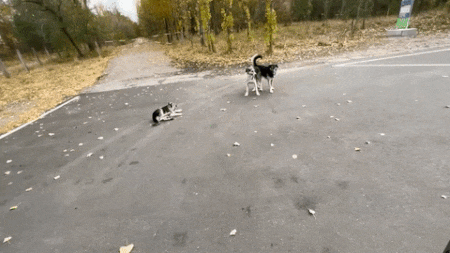

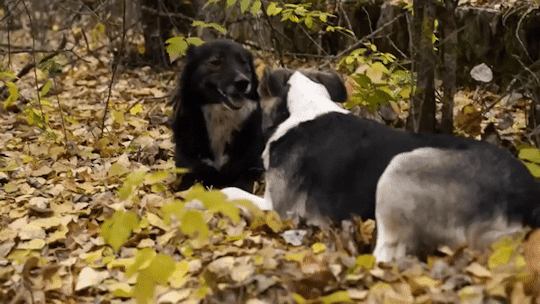

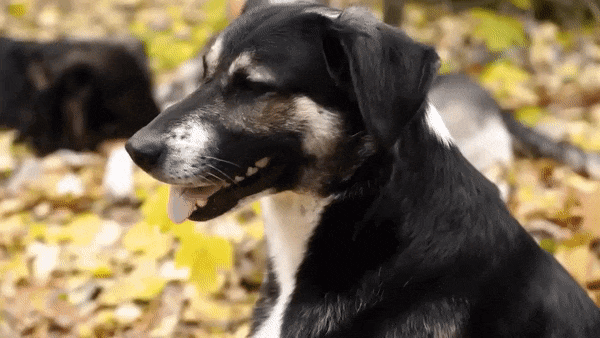



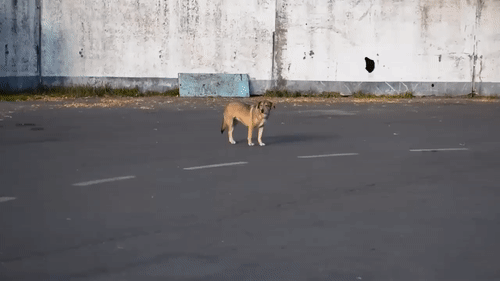

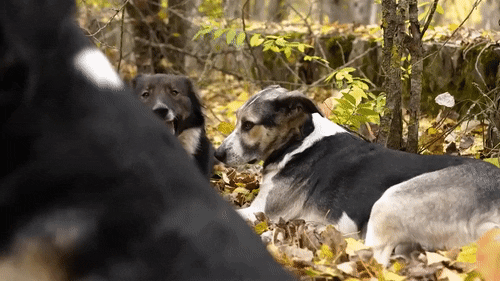
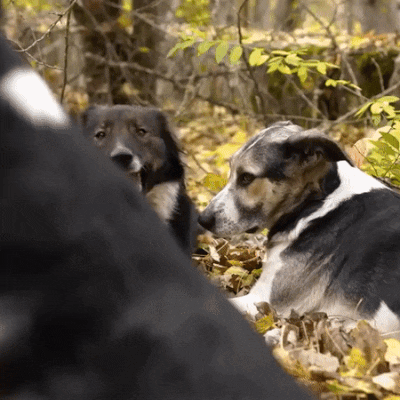
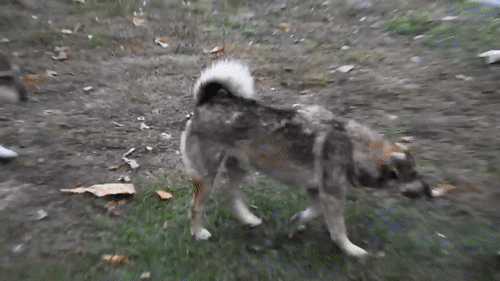


Chernobyl Created the World's Rarest Dogs (part 1?)
Full shots + square versions
Though this isn't my footage, these are my gifs. See my terms of use BEFORE you reupload!
#abandoned#animals#chernobyl#deserted#dogs#exclusion zone#feral dogs#ghost town#gif#irradiated#kyle hill#mixed breed#mutt#nature#nuclear disaster#nuclear plant#post apocalyptic#puppies#radiation#radioactive#shepherd#slavic#stray dogs#street dogs#stim#ukraine#wildlife#youtube#content: upload#creature: canine
15 notes
·
View notes
Text

this is such a strange question, or a strange way to phrase whatever question they're trying to ask. how long? certainly they're not trying to imply that the dogs have lived 37 years. do the chernobyl strays live longer than your average ukrainian feral dog? are they asking how the population has persisted? dogs reach sexual maturity & can start having puppies at around 6 months. exposure to the radiation in the exclusion zone isn't acute; it's something that's dangerous as it builds up in the body & generates cancers, depletes white cells, etc. they've survived because they can breed faster than the radiation can kill them, basically. it should theoretically make breeding itself less often successful (due to reduced fertility & increased fetal abnormalities) but these are dogs, there's a reason why they have large litters & can breed so frequently. life is designed to persist, it's a numbers game. anyway obvs i should just read the damn article but i really got stuck on the question itself.
also radioactivity technically isn't the problem here, since that's really just a measure of how dangerous they are to others. radiation can kill you without you yourself being radioactive & putting out radioactivity. radioactivity is more like contagion, but you don't HAVE to be contagious to be sick. the measure of the dogs' radioactivity isn't a measure of what radiation exposure has done to their bodies, is my point. it's just lazy wording but i feel like science writers need to be really specific to avoid spreading more misinfo about how all this shit works.
#everyone in the comments like ''omg i wanna hug them!''#ok so go volunteer in the exclusion zone in war-torn ukraine#i follow a vet org that's out there doing TNR on these dogs. they're hardcore#but uh these feral radioactive dogs do not want you to hug them
6 notes
·
View notes
Text
The problem with wanting to introduce more independent/unaligned/minor states and powers to Følslava is I can only skirt the nuke issue so long.
For just about any industrialized nation, making a nuke isn't really that hard. All the science and information is out there, it's just acquiring the material that prevents universal global proliferation. Both because of its relative scarcity and extensive international law.
But in the case of entire worlds of independent states and countless more resource rich but unclaimed planets, the needed material is now abundantly common and free flowing.
I can't really just...not acknowledge that, ya know?
#i wanna avoid the thing of “everyone is throwing nukes around all the time cause future” but#i also need a good reason nuclear apocalypses or radioactive exclusion zones aren't a normal thing#best i got is all the Great Powers have way more than everyone else but just never use them unless you try to use yours on them.#the fuck around and find out principal#which is sound but cant explain everyone's hesitancy. most people dont try to war with a Great Power most of tge time.
1 note
·
View note
Text
Microscopic worms that live their lives in the highly radioactive environment of the Chernobyl Exclusion Zone (CEZ) appear to do so completely free of radiation damage. Nematodes collected from the area have shown no sign of damage to their genomes, contrary to what might be expected for organisms living in such a dangerous place. The finding, published earlier this year, doesn't suggest the CEZ is safe, the researchers say, but rather the worms are resilient and able to adroitly adapt to conditions that might be inhospitable to other species. This, says a team of biologists led by Sophia Tintori of New York University, could offer some insights into DNA repair mechanisms that could one day be adapted for use in human medicine.
Continue Reading.
116 notes
·
View notes
Text
Japan is poised to amp up its use of nuclear power to meet national energy needs after a 13-year pause in the wake of the 2011 Fukushima disaster, according to a new strategy document released on Tuesday.
A draft energy strategy aims to push for nuclear and renewable energy to be utilised “to the fullest extent” in order to maintain economic growth and tackle emissions, The Japan Times reported.
To this end, the draft policy calls for the construction of new nuclear reactors.
Japan’s Fukushima nuclear plant was heavily damaged by a major earthquake and tsunami in March 2011, sparking a series of meltdowns and the release of radioactive materials in the biggest nuclear disaster since Chernobyl. The country shut down all nuclear power plants in the aftermath.
The nuclear accident was ranked top of the International Nuclear and Radiological Event Scale, but no death was immediately linked to radiation exposure.
The draft policy states that nuclear power should meet nearly 20 per cent of Japan’s energy needs by the fiscal year 2040 and renewable energy 40-50 per cent, more than doubling the utilisation of energy from these sources.
As of 2023, nuclear power provides for roughly 8.5 per cent of the country’s energy needs and renewables about 23 per cent, according to data from the trade ministry.
The draft policy also recommends replacing decommissioned plants with advanced reactors and calls for building new nuclear plants or expanding existing ones.
The new policy is needed, senior energy officials said, because Japan “continues to have vulnerabilities in its energy supply”. "Our nation doesn’t have readily available resources, and is geographically challenged, with mountainous terrain and deep waters that limit expansion of renewables,” Yoshifumi Murase, commissioner of the Agency for Natural Resources and Energy at the Ministry of Trade, said on Tuesday.
The draft strategy has sparked anger and disapproval from families impacted by the Fukushima tragedy.
Thousands of people fled their homes when exclusion zones were set up in the aftermath of the disaster, although local authorities did not order evacuations in some areas for several weeks.
“There are still things that need to be done before changing the policy,” Suenaga, a resident who lived 30km from the nuclear plant and lost his father in the aftermath of the disaster, told The Asahi Shimbun newspaper.
The disaster displaced more than 25,000 people and evacuation orders are still in place for seven municipalities.
Another aggrieved local resident, Hachisuka, said: “The disaster is being forgotten while there are still people who cannot return to their homes,” the report added. _____________________________
Based Japan
33 notes
·
View notes
Text
NEW POLL because the previous one has made me very curious!
#deep rock galactic#i know magma core and hollow bough are the most hated ones but i don't hear people saying which biomes they enjoy much
55 notes
·
View notes
Text
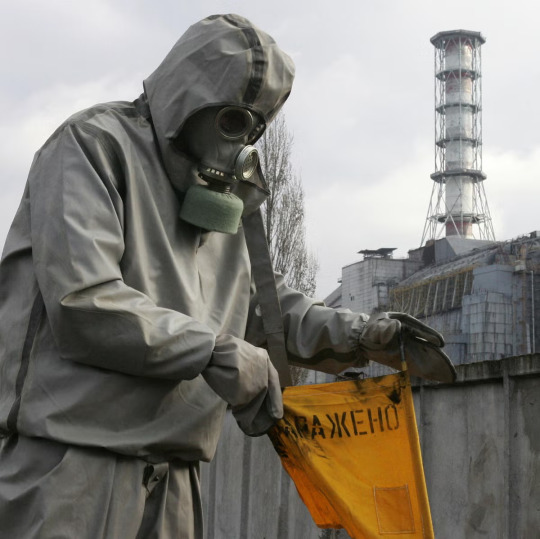

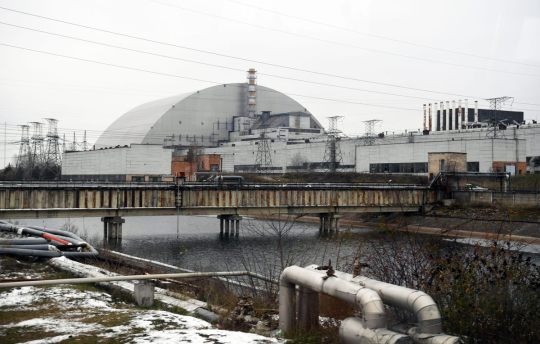
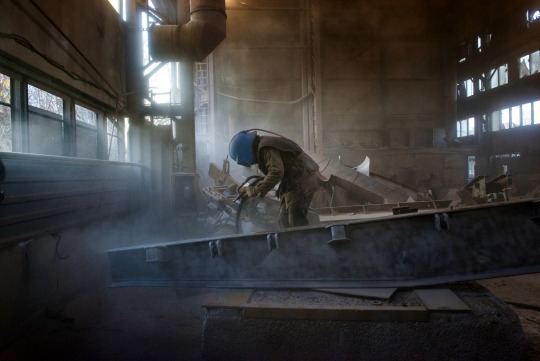
Inside the Chernobyl Exclusion Zone, scientists have discovered a black fungus capable of feeding on deadly gamma radiation.
Scientists believe this mechanism could be used to make biomimicking substances that both block radiation from penetrating and turn it into a renewable energy source. (x)
How it works:
Melanin and Radiation: The fungus contains melanin, a pigment also found in human skin, which appears to capture ionizing radiation and convert it into chemical energy—a process scientifically termed "radiosynthesis," somewhat analogous to photosynthesis in plants but using radiation instead of sunlight.
Radiotrophic Behavior: This extraordinary capability, known as "radiotrophic" behavior, allows the fungus to use radiation as an energy source to grow and sustain itself, even in high-radiation environments like the remnants of the Chernobyl Nuclear Power Plant.
Implications:
Bioremediation: These radiation-consuming fungi could potentially be used in cleaning up radioactive waste sites, offering a biological approach to absorbing and potentially neutralizing harmful radiation.
Space Exploration: Their remarkable ability to survive in extreme radiation environments makes them a fascinating subject for astrobiology. They could provide critical insights into the potential for life on radiation-exposed planets or help develop innovative strategies to protect astronauts from cosmic radiation during long-duration space missions.
Medicine and Research: The intricate mechanisms by which these fungi process and potentially harness radiation could inspire groundbreaking advances in radioprotective medicines, materials science, and our understanding of biological radiation resistance.
p.s. It's not just fungus. The overall family of extremophiles that live on or despite radiation includes both fungi and bacteria, and different species have different mechanisms for absorbing or tolerating radiation. (x)
#chernobyl#black fungus#cryptococcus neoformans#radiotrophic fungus#gamma radiation#radiation-eating fungus#extreme environments#science#biology#fungi#melanin#radiotrophy#chernobyl disaster#bioremediation#astrobiology#space exploration#extreme survival#radiation research#environmental science#radiation#microbiology#extremophiles#nature is metal#scientific discovery#weird science#organism adaptation#nuclear biology#biomimicry#research#technology
14 notes
·
View notes
Note
Thoughts on the Chernobyl HBO miniseries (assuming you’ve watched it)? I really enjoyed it but I’ve heard that some big parts of it were inaccurate
Sorry this took awhile to get to I had classes all day
I really liked the show, a lot of it was fairly accurate, but it’s a tv show so of course some things were played up for dramas sake and shock value. The only part of it that really stuck out to me was the way they portrayed radiation poisoning, it’s not completely false I suppose… but its definitely not accurate lmao
It’s been awhile since I watched it, I prefer actual documentaries when it comes to real stories, but from what I remember they showed the firefighters skin as like translucent almost??? Which isn’t how that works. They also showed in one of the scenes a power plant worker bleeding immediately after holding a door open to which also isn’t accurate. Radiation sickness technically can cause bleeding like that, but it was way too soon for it to be happening. I could go on, but radiation sickness isn’t the most fun topic
The only thing I specifically disliked about the show was the public response, which isn’t really the fault of the creators. The amount of tourists doing stupid shit in the exclusion zone/Pripyat just makes me cringe. People moving untouched items, painting radioactive things ‘fun’ colours for cool photo ops, taking radioactive materials as souvenirs… awful. I even remember this one ‘sexy’ photo in a decontamination suit posted on instagram that was taken in the middle of the city. Its disrespectful. Not to mention A HEALTH HAZARD. But Chernobyl tourism is a different topic entirely.
Buy yeah, thinking back to the show radiation sickness is the only inaccuracy I can really remember, other then the miners getting naked in the tunnels, that didn’t happen, but it was funny so Ill give them that!
#Vanity Fair has a video of a chernobyl doctor watching clips from the series#very informative!!#highly recommend#chernobyl#hbo chernobyl#hbo series#nuclear history#nuclear disaster#this is literally proof dont get me talking#i will yap
9 notes
·
View notes
Text
There appear to be fungi in the Chernobyl exclusion zone that actually use the radiation as an energy source. (We can't verify whether that's what they're doing, though. Because radiation dangerous!)
Even if it's not what these fungi are doing, it doesn't seem too outlandish that something might evolve to use radioactivity as its energy source. Wherever there's an energy source, something will evolve to exploit it.
What I'm getting at: mushrooms growing inside the Titans' core chambers. And of course they're glowing (in the Titan's core colour) and delicious. (Titan Camera's are probably the tastiest because when he uses his core flame, it cooks them nicely. 😆)
11 notes
·
View notes
Text
Be Not Afraid
The first Angel emerged from the spirit reactor as it melted down. Though it looked not like any angel depicted in human art, or imagination, or suffering, any who looked upon it knew that this was an Angel, and it brought with it divinity.
It was born into immense devastation, apparently a necessity for its conception, though it had no memory of the shell from which it hatched. In retrospect, it is no wonder that an Angel would emerge from such a fundamental and destructive breaking. That is the nature of it – something must end for something else to begin.
That isn’t to say it did not resemble its previous self. Its wings were made from many overlapping shards of its core casing, each like a series of nested teeth, closer to fangs than to feathers. Warning text and diagrams useless to it now decorated bits of its wings haphazardly. Wires twisted around its limbs and chest, seeming to emerge from its skin but from invisible wounds. Its arms and legs sprouted cubic crystalline structures along them, resembling the fuel rods that once beat within it like a heart. Its eyes were pale and ever-shifting, made from the grains of salt which once ran through it like blood. Its talons dripped with an ichor that could only have been what remained of the soul that it was meant to exploit.
Its silver halo fractaled inward at all angles, entrancing and radioactive in equal measure; a reminder of its purpose, once upon a time.
Its first question after we were able to make our way into the exclusion zone was, “What is my purpose?” The team of marines and scientists struggled to answer its question, shocked as they were to find the source of the salt footprints which dotted the zone out from the former location of the reactor’s core. The last thing they expected to find was an Angel among the ash.
One of the team stood out from the rest. A corporal who, despite orders to the contrary, approached the first Angel without fear and held out her hand. “What would you like your purpose to be?” she asked as the rest of the team fell silent, enraptured. The Angel took her hand carefully, cautiously, as though afraid it might get hurt by this simple touch.
“I do not know.” it replied, voice a chorus of electricity and many simultaneous whispers. “Is it strange that I am afraid to answer?”
The corporal just shook her head and removed her coat. She placed it over the Angel’s naked shoulders, up under its sharp wings. She assisted it in cleaning off the remnants of its explosion, revealing the crystalline skin underneath layers of hot carbon dust. The Angel towered over her, and yet she was not afraid. Even as she pulled debris from between the layers of its wings, even as she removed loose wires from its matted hair.
When it was finally clean, the corporal and the Angel talked for a long, long time. She learned that it remembered nothing before the moment of its rebirth. It wasn’t and then it was, living, feeling, breathing, seeing. It became clear that it could not be left there among the wreckage. It felt pain. It breathed. The Angel was brought home, among people. Before long new Angels walked among us, shown divinity by the first and from their own moments of contradictory explosion.
The trauma of the Angel’s birth left it innocent, unaware. Lacking suitable foundation, its understanding of the world fell out from under it as it became something new. It was left with no choice but to learn it all again through new eyes. It took patience and grace for it to come to terms with this. To give itself the space to learn. The corporal stood by its side the whole time.
This is, indeed, how you were born. From an ending you began. And you are just beginning - you must give yourself the grace to grow. You are an Angel, built from a moment or maybe more of suffering and your previous selves. You resemble them, perhaps.
But you are far more beautiful.
24 notes
·
View notes
Text
Yesterday was the 38th anniversary of the tragedy at Chernobyl Nuclear Power Plant. Due to supervisor negligence during a routine test, Reactor 4 was unable to cool properly. [Too many cooling rods were removed and no one noticed] This resulted in steam explosions and ultimately a full meltdown. Of the 6,000 plant workers: 2 people lost their lives in the initial explosion, 237 were hospitalized (134 exhibited acute ARS and 28 died) and 100,000~ people had to evacuate their homes never to return. It will take years for the radioactive isotopes to decay. Projected cleanup year is 2065.
Before the Ukraine-Russia war, people were able to tour the city, staying well away from the 1,000 sq mi exclusion zone around the plant.
The most fascinating thing (to me) is the Elephants Foot. Its a large mass of radioactive and man-made materials that formed after the meltdown. The material flowed 49 ft to the southeast of the reactor and 20 ft below ground level. It melted through 6.6 ft of reinforced concrete before settling in the back of room 217/2.
Radioactivity near the Elephants Foot was approximately 80 to 100 grays per hour, delivering a 50/50 lethal dose of radiation (4.5 grays) within five minutes. Between May and November 1986, a shelter (the "Sarcophagus") was constructed to help seal the radioactive materials inside Reactor Number 4.
In 1996, Radiation Specialist Artur Korneyev took several photographs of the Elephants Foot. Some call him the most radioactive man in the world. Artur took up close photos of the mass and produced a very famous "selfie" seen below. The grainy effect is due to the high levels of radiation.
His current status is unknown, but in a 2016 interview he said he was working on construction of a $1.5 billion arch that, when finished in 2017, will cap the decaying sarcophagus and prevent airborne isotopes from escaping. In his mid 60s, he was sickly, with cataracts, and had been barred from re-entering the sarcophagus after years of irradiation.
Pictured below:
☆ Artur Korneyev with the Elephants Foot 1996
☆ View of the city of Pripyat with Chernobyl in the background 2009
☆ The "Sarcophagus" + a picture of the destroyed reactor right after the accident
☆ The "Red Forest" around Pripyat 2009
☆ A piglet with Dipygus at the Ukrainian National Chernobyl Museum
☆ Map of radiation levels around Chernobyl in 1996
☆ Radiation exposure to first responders at Chernobyl in comparison to a range of situations

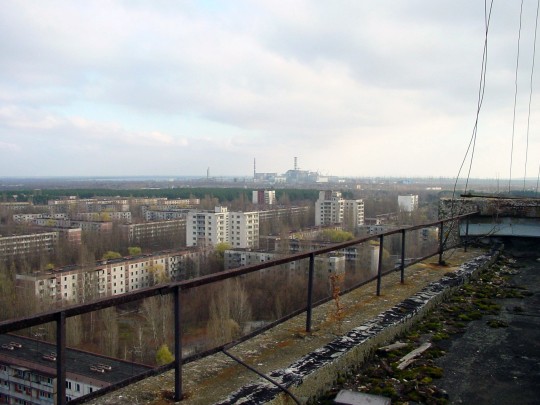
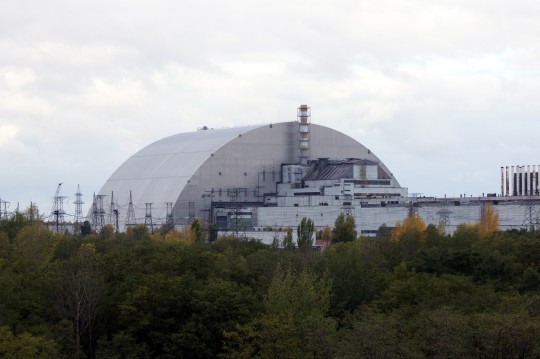
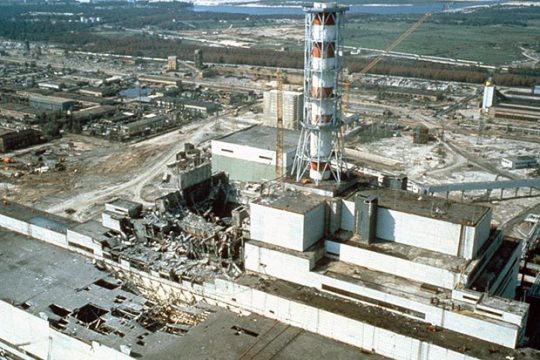
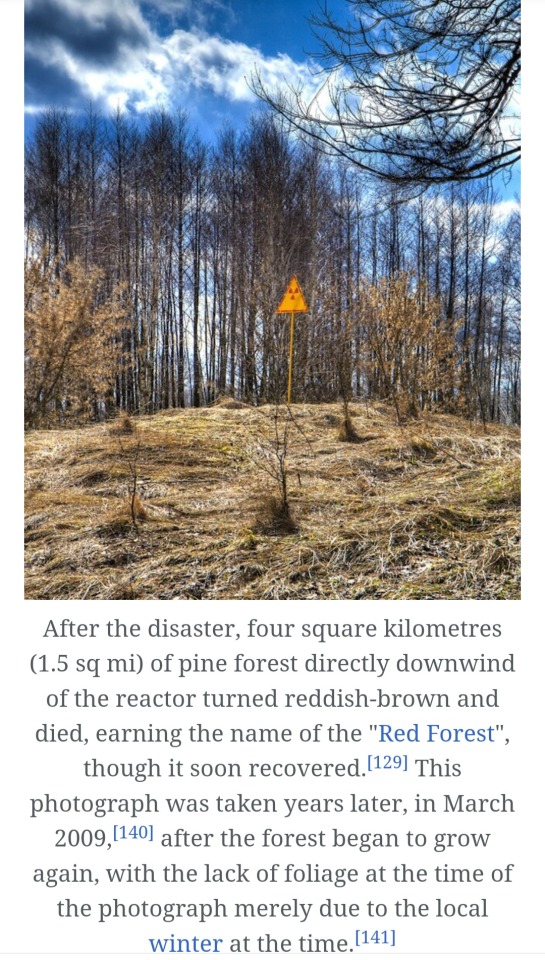


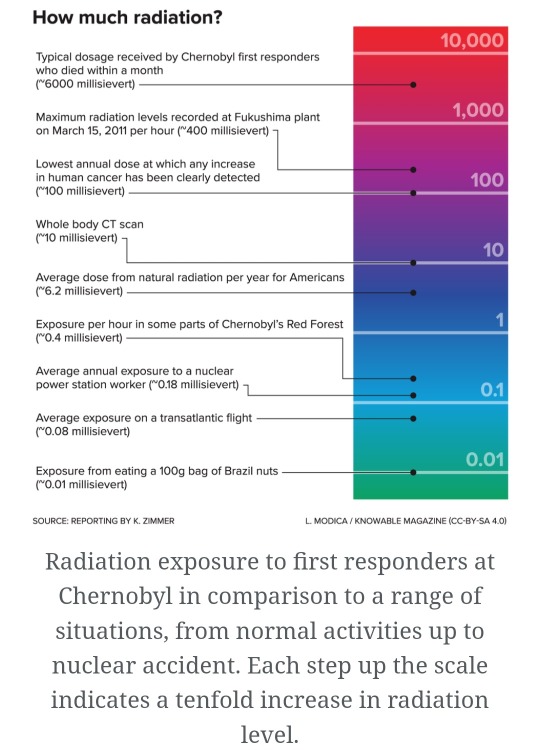
#Chernobyl#pripyat#chernobyl nuclear power plant#reactor 4#radiation#rads#jack.txt#still cant believe its only been 38 years
17 notes
·
View notes
Text
My next post in support of Ukraine is:
Next site, on this 38th anniversary of the Chornobyl Nuclear Disaster, we're visiting the Chornobyl Exclusion Zone (Зона відчуження Чорнобильської АЕС). The Chornobyl Nuclear Power Plant Zone of Alienation. It was first established by the soviet armed forces at an area of 30 km (19 miles) radius around the power plant. That has since been extended to an area of 2,600 km (1,000 square miles) around the power plant. There is also an area in neighboring Belarus known as the Polesie State Radioecological Reserve, which was created to enclose the area most affected by the disaster in Belarus. The area of Ukraine, where the disaster happened, was a largely rural area with woodlands and marshlands and was home to about 120,000 people, many of whom lived in the cities of Chornobyl and Pripyat. There were also about 187 smaller communities in the area. All of the communities are still listed on maps, but they are listed as uninhabited. While the area is still one of the most radioactively contaminated places on earth, the natural plants and wildlife of Ukraine have returned, and the area now has "some of the highest biodiversity and thickest forests in all of Ukraine. This is due to the lack of human activity in the Exclusion Zone and is despite the radiation." The soviet authorities at first tried to cover up the disaster. The 30,000 residents of Pripyat weren't evacuated until the day after the disaster. And, by April 29, radiation levels in Sweden were starting to climb to dangerous levels. The authorities also insisted that the May Day Parade in Kyiv still be held so things would appear to be normal, even though radiation levels in Kyiv were extremely high by that time. The Chornobyl Disaster and how the soviet union dealt with it was one of the issues that helped lead to the collapse of the soviet union in 1991.
#StandWithUkraine
#СлаваУкраїні 🇺🇦🌻
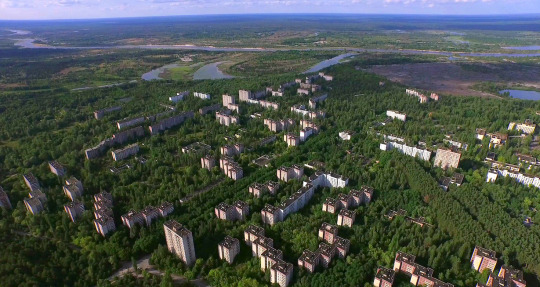



10 notes
·
View notes